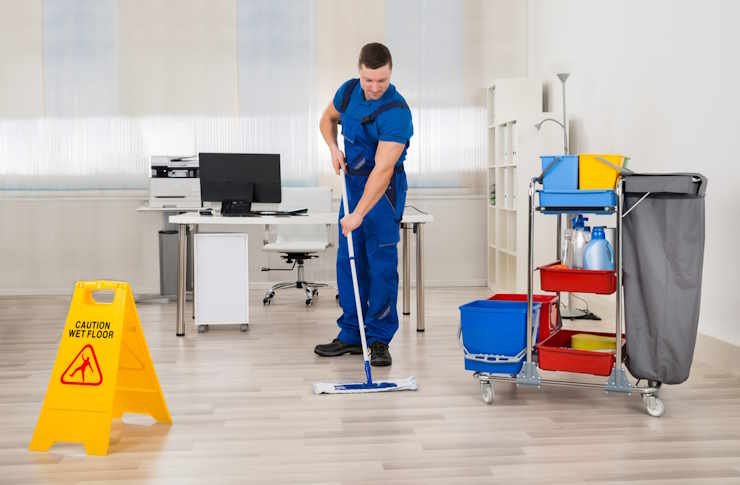Exploring Company Cleaning Services: Roles and Workplace Practices
Company cleaning services involve maintaining office environments, shared facilities, and workplace safety standards. This article highlights the responsibilities within cleaning roles, the skills required for daily tasks, and the practices that ensure clean and professional spaces.

Company cleaning services play a vital role in maintaining productive, healthy, and professional work environments. Whether provided by in-house staff or external contractors, these services ensure that workplaces remain sanitary, presentable, and compliant with health and safety regulations. This article explores the various aspects of company cleaning services, including common responsibilities, essential skills, and workplace practices that support hygiene and safety standards.
Common Responsibilities in Company Cleaning Services
Cleaning professionals in corporate settings handle diverse responsibilities that extend beyond basic tidying. Daily tasks typically include vacuuming floors, emptying trash receptacles, sanitizing common touch points, and cleaning restroom facilities. Weekly or monthly duties often encompass deeper cleaning activities such as carpet shampooing, window washing, and furniture polishing.
Specialized cleaning responsibilities vary by industry. Healthcare facilities require strict adherence to medical-grade sanitation protocols, while food service areas demand compliance with health department regulations. Office buildings need regular attention to conference rooms, break areas, and reception spaces that create first impressions for clients and visitors.
Many cleaning professionals also manage inventory of cleaning supplies, report maintenance issues, and coordinate with facility managers to address special cleaning needs. During seasonal transitions or special events, they may perform additional tasks like deep cleaning carpets, stripping and waxing floors, or preparing spaces for company gatherings.
Essential Skills for Professional Office Environment Maintenance
Successful cleaning professionals possess technical knowledge about appropriate cleaning methods for various surfaces and materials. Understanding which products and techniques to use on wood, glass, metal, fabric, and electronic equipment prevents damage while ensuring effective cleaning. This knowledge extends to recognizing when specialized approaches are needed for sensitive areas like server rooms or executive offices.
Time management and organizational skills are crucial for completing all assigned tasks within designated timeframes. Many cleaning professionals work during off-hours to minimize disruption, requiring self-direction and the ability to prioritize work efficiently. Creating and following cleaning schedules ensures consistent coverage of all areas while accommodating special requests.
Interpersonal skills prove invaluable when interacting with office staff or addressing concerns about cleaning quality. Professional communication, discretion regarding sensitive information encountered during cleaning, and adaptability to changing workplace needs contribute significantly to successful cleaning operations. The ability to work both independently and as part of a team enhances service delivery and workplace satisfaction.
Workplace Practices Supporting Hygiene and Safety
Comprehensive training forms the foundation of effective cleaning services. Staff should receive instruction on proper chemical handling, equipment operation, and infection control protocols. Regular updates on best practices ensure cleaning teams remain current with industry standards and emerging health concerns. Documentation of cleaning procedures creates consistency and facilitates quality control.
Proper equipment and supplies significantly impact cleaning effectiveness and efficiency. Commercial-grade vacuum cleaners with HEPA filtration, microfiber cleaning tools that trap rather than spread contaminants, and ergonomic equipment that reduces physical strain all contribute to better outcomes. Environmentally friendly cleaning products have become increasingly important as organizations prioritize sustainability alongside cleanliness.
Safety protocols protect both cleaning staff and building occupants. Clear procedures for handling biohazards, proper storage of chemicals, and the use of appropriate personal protective equipment minimize risks. Cleaning during low-traffic periods reduces slip-and-fall hazards, while proper signage alerts building users to wet floors or other temporary hazards.
Technology and Innovation in Cleaning Services
The cleaning industry has embraced technological advancements that enhance efficiency and effectiveness. Electrostatic sprayers provide comprehensive surface coverage with disinfectants, while UV-C light devices offer chemical-free sanitization options for appropriate settings. Automated floor cleaning machines increase productivity while reducing physical strain on cleaning staff.
Digital management systems have transformed how cleaning services operate. Mobile applications allow for real-time task assignment, quality control inspections, and communication between team members. QR codes placed throughout facilities can link to cleaning schedules or provide specific instructions for specialized areas. These technologies improve accountability, consistency, and service delivery.
Data-driven approaches to cleaning allocate resources more effectively by identifying high-traffic areas requiring more frequent attention. Occupancy sensors can trigger cleaning needs based on actual usage rather than fixed schedules. These innovations help cleaning services balance thoroughness with efficiency, optimizing both labor costs and cleaning outcomes.
Quality Control and Performance Measurement
Effective cleaning services implement systematic quality assurance processes. Regular inspections using standardized checklists ensure consistent adherence to cleaning standards. Some organizations employ third-party evaluators to provide objective assessments of cleanliness levels. Feedback mechanisms allow building occupants to report concerns or special cleaning needs promptly.
Performance metrics help quantify cleaning effectiveness beyond visual inspection. Surface testing for bacterial presence, particulate matter measurement, and indoor air quality assessments provide objective data about cleaning outcomes. These measurements help justify cleaning investments and identify areas needing improvement.
Continuous improvement processes encourage cleaning teams to refine their approaches based on feedback and performance data. Regular team meetings to discuss challenges and solutions foster a culture of excellence. Recognition programs that acknowledge exceptional performance help maintain motivation and high standards among cleaning staff.
Conclusion
Company cleaning services encompass a complex array of responsibilities, skills, and practices that contribute significantly to workplace health, safety, and productivity. From daily maintenance tasks to specialized cleaning protocols, these services require technical knowledge, interpersonal abilities, and organizational skills. As cleaning technologies continue to evolve and workplace expectations for cleanliness increase, cleaning professionals must continuously adapt their approaches while maintaining focus on fundamental hygiene principles. When properly implemented and supported, cleaning services create environments where employees can thrive and organizations can project professionalism to clients and visitors alike.




